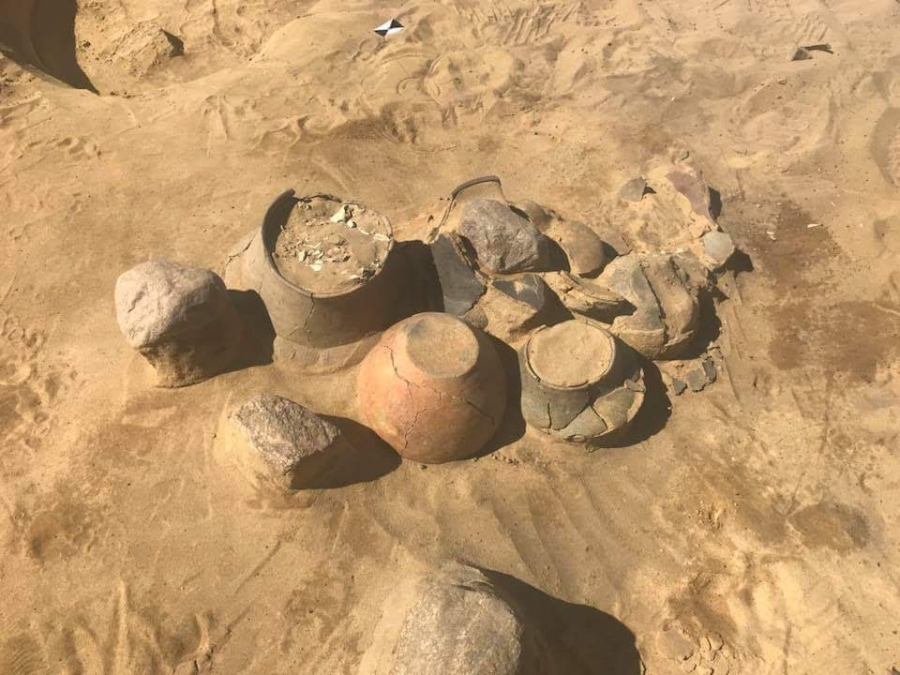
Part one of a continuing series about experiences on an archeological dig in Poland
Indiana Jones, Laura Croft, “The Mummy” movies. These famous depictions of archeologists are often pitted against powerful, rich enemies that seek to loot and destroy archeological sites. In reality, looters are rarely criminal masterminds that steal treasures from famous sites. Instead, they’re often just ordinary people looking for cool stuff to collect. Additionally, these archeologists are more often portrayed as looters than scientists.
“The site is right here, I mean someone could come up and walk away with human bone,” said Tiffany Loera, a student from the Slavia Foundation, which ran the archeology school I attended while in Poland.
The site we worked on was in the middle of farmland in Poland; the students and I excavated Bronze Age and 16th to 18th century materials while surrounded by wheat. Just looking on the surface, one could see tiny fragments of bone and pottery from these eras. And just like Indiana Jones, others could have and probably did loot items from the site.
Archaeology is the study of past material goods in order to understand past societies and cultures. In this way, we can understand why we are where we are today and hopefully it will help us for the future.
“People don’t really understand why it’s bad…they go to these big sites and they just take stuff, and it’s like why, it’s just going to go and sit in a museum,” said Ashley Stewart, an osteologist at the field school. “And it’s like well we know what it means, you know, when it came from, we know who made it, we can look at, like pottery for example. We can source it and see where it came from. And if you have it, we’re not doing any of that, but also the knowledge isn’t being expanded for everyone, the whole populous can’t enjoy it and learn from it, which I think is the most important thing.”
By this definition, Indiana Jones acted more like a looter than an archaeologist. For instance, when Jones took a gold statue from a temple in the tropics, he never stopped to study the temple or anything near the statue. This information is valuable in figuring out why the statue was so important to the people or what it represented. By simply taking the gold statue, the information about where it was found and what materials were found with it are completely lost.
Every archaeologist’s worst nightmare is someone who took artifacts from a place without documenting anything about it. In this way, artifacts are seen as neat trinkets instead of valuable pieces of information that can be used to understand and piece together daily life hundreds to thousands of years ago.
In Poland, we excavated a graveyard that had Bronze Age items and 16th to 18th century coffin burials. Everything we found held important information about the people that lived at the time. Coins found on the bodies could help show how old the burials were and parts of skeletons could help piece together what life was like during that era.
Unfortunately, there were some disturbances we called “potato pits”. These pits were about six feet wide and randomly scattered around. The most likely explanation for the pits were that looters came through the cemetery not too long after the burials occured. It is not known what they were looking for, but everything in the pits was either destroyed or messed up in some way.
“[The potato pits did] a lot of damage to the burials…their grave was just cut in half because there was a potato pit like right above it,” said Victoria Swenson, the field school’s osteology instructor. “And a couple years ago we had one [a pit] that was just full of femura sitting up vertically and random bones. And then the graves that were nearby, that they cut into, were just destroyed.”
Anyone who disturbs a grave for a keepsake not only ruins future academic research, but also shows that they do not respect the dead or the dead’s living relatives. Not only is valuable information lost for those trying to understand past peoples and cultures, but the final burial place for someone is also obliterated. So next time you see a cool old trinket, please leave it alone. At the very least, don’t tell Indiana Jones about it.
Written by: Rachel Paul—science@theaggie.org



